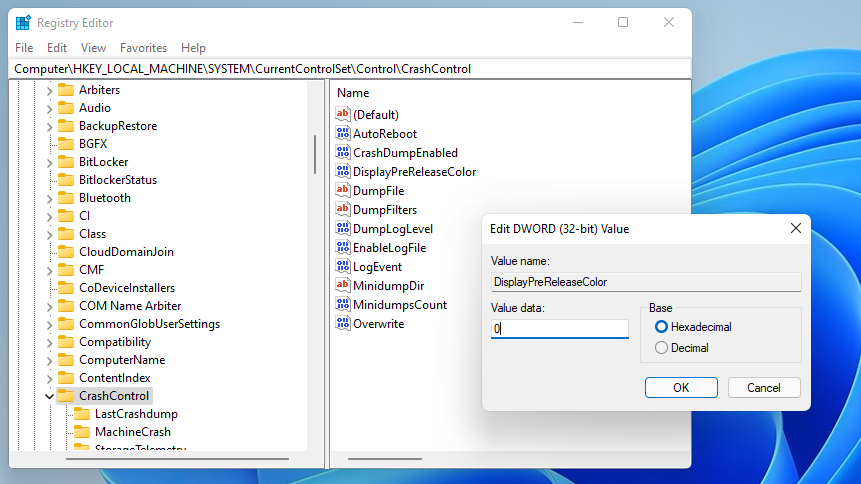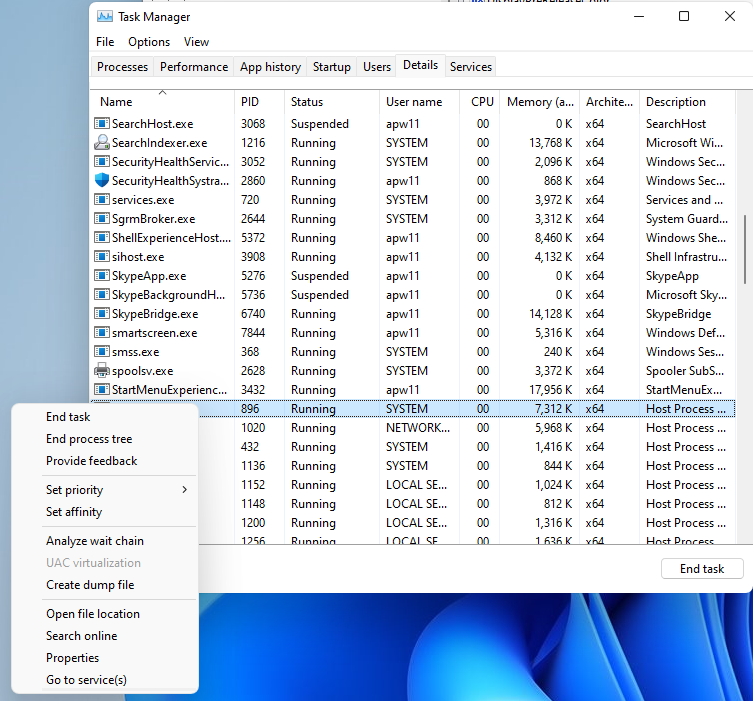Windows 11's Blue Screen of Death Could Be Turning Black
Windows' infamous Blue Screen of Death could soon change its colors and become a "Black Screen of Death." The Verge's Tom Warren reports that Microsoft intends to change the color of the crash screen to black in order to match the color of its shutdown and start screens in Windows 11.
However, the current Windows 11 preview build may not actually give you a Black Screen of Death. When we deliberately caused a CRITICAL_PROCESS_DIED error, we still got the classic blue screen. Later, we read a Tweet from a user named Xeno who said that, to get the new color, you have to change a registry key. After performing the change, we, too, got a Black Screen of Death.
In reporting the change, Warren did not cite a specific source within Microsoft, which has not officially announced any such change. "The Verge understands Microsoft will be switching to a Black Screen of Death for Windows 11, matching the new black logon and shutdown screens," he wrote (emphasis mine).
Considering that Windows Blue Screens of Death go back decades, changing the color is a big deal. The last major change occurred when Microsoft added the frowny face and QR codes back in Windows 8.
It's important to note, though, that Microsoft has experimented with different colors before. At least at one point, users of Windows 10 Insider Builds got green screens of death, and those with hardware errors have been known to occasionally get red screens of death. However, the most common crash screen has always been blue.
In the absence of an on-the-record comment from Microsoft, we might assume that a black crash screen is something the company is testing right now and that it's possible it will replace the blue one. Either way, we'll still be calling it a BSOD.
How to Get the Black Screen of Death in Windows 11
If you want to experience a Black Screen of Death in Windows 11, assuming you have the Windows 11 preview installed, you'll need to edit your registry (launching regedit), navigating to HKLM\SYSTEM\CurrentControlSet\Control\CrashControl and setting the value of DisplayPreRelaseColor to 0.
Get Tom's Hardware's best news and in-depth reviews, straight to your inbox.

Of course, you won't actually see the black screen right away, unless you deliberately cause your computer to crash. If you really want to do that, make sure everything is saved. Then go into Task Manager, click More details, navigate to the Details tab, select an instance of svchost.exe, right-click and select End Process Tree. Then click the Shutdown button when warned.

That will cause a CRITICAL_PROCESS_DIED error and, unless you've set your computer not to restart on BSODs, will make your computer reboot itself in a few seconds.
Avram Piltch is Managing Editor: Special Projects. When he's not playing with the latest gadgets at work or putting on VR helmets at trade shows, you'll find him rooting his phone, taking apart his PC, or coding plugins. With his technical knowledge and passion for testing, Avram developed many real-world benchmarks, including our laptop battery test.
-
Alvar "Miles" Udell Typical Microsoft, instead of making a useful change, like generating an error summary and detail log along with a direct link to the error glossary webpage, which are placed on the desktop for easy viewing on the next boot, they make an insignificant change of changing the error screen color...Reply -
Shadowclash10 ReplyAt least at one point, users of Windows 10 Insider Builds got green screens of death,
My main PC is on the Beta Channel of the Insider program, and I get green BSODs, so I suppose that's still ongoing. -
Giroro Well Microsoft gave it there best and their best wasn't good enough.... or even adequateReply
....or even an attempt at something new.
I've already decided there's no chance I downgrade to Windows 11's slower GUI (as in it takes more clicks to see less information).
So I'm totally ambivalent on the OS starting after this post ... until they either figure out how to make a settings menu that is more functional than the control panel, or they invent a file system that is better at taking advantage of a fast SSD.
At a minimum, they should get around to fixing some of the "behind the scenes" problems that have been persisting for over a decade.
Maybe they could do more to stop their hardware partners from flooding out the market with barely-functional garbage.
Fix the problems, do a clean sheet rewrite, add some actual OS-level features instead of just screwing around with mandatory pre-installed apps. Do any amount of work to improve the actual "thing that makes your computer go". The GUI was fine (not great, but at least usable). That's the last thing they should have tried changing.
A new GUI isn't good enough.
Trying to force different/more of their wildly unpopular apps is not good enough.
"It can still run Microsoft teams" and "you can install an emulator" are not selling points for an operating system.
What real changes are they making to justify a new version number, or that people should even try out the worse UI/UX?
I don't need another inferior reskin of Windows NT 6.1.
And I'm no "change is bad" purist here either. I actually liked Vista a lot. It was the first home version of Windows that could easily connect to networks and maintain a consistent connection. But, the changes need to have a point. What is the point of Windows 11?
Why should anybody bother paying enough attention to even find out when it will release? -
watzupken Why is this even news worthy? Blue, black, red or green, it makes no difference to me.Reply -
excalibur1814 ReplyGiroro said:Well Microsoft gave it there best and their best wasn't good enough.... or even adequate
....or even an attempt at something new.
I've already decided there's no chance I downgrade to Windows 11's slower GUI (as in it takes more clicks to see less information).
Damned if they do, damned if they don't. Yes, sure, for an Admin a couple of things do take longer. Right clicking the Start button is at least a rescue to get to the Task Manager etc.
Either way, it's the future, so we're in it for the long game. Embrace the changes. People said the same things about Windows 10, that you're saying about 11.
